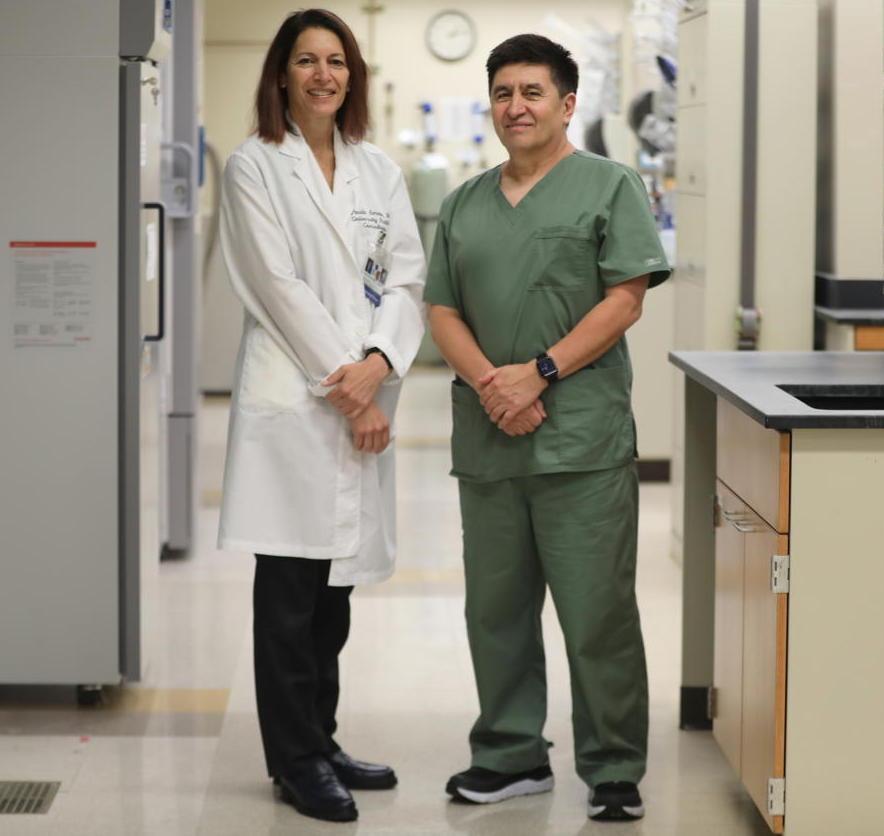Experimental Human Cell Division Does Not a Baby Make

Paula Amato & Shoukhrat Mitalipov
[OHSU News/Christine Torres Hicks]
On September 30th, a team of 21 scientists from Oregon Health & Science University (OHSU) published a significant paper in Nature Communications, with a scientifically accurate but, to many, somewhat abstruse headline:
Induction of experimental cell division to generate cells with reduced chromosome ploidy
The lead authors were Shoukhrat Mitalipov, recently described here as “a push-the-envelope biologist,” and his long-term colleague Paula Amato. (Recall that in July the pair had co-published with a colleague “The case for germline gene correction: state of the science,” which highlighted safety and ethical concerns.)
The press release about the current study is headlined:
OHSU researchers develop functional eggs from human skin cells
Research develops proof of concept for treatment of infertility affecting millions
The scientists used a modified cloning technique to replace the DNA in donor eggs with DNA from skin cells. Because skin and other body cells have pairs of each chromosome, versus the single copy in eggs (and sperm), the scientists had to coax the egg to drop half its chromosomes. They were successful, and also succeeded in fertilizing the reconstituted eggs. However, only 9% of the fertilized eggs developed to the blastocyst stage and none would have been usable in IVF, due to aneuploidy or mosaicism.
Some of the initially published reports translated this into exaggerated headlines such as:
Babies could be born without biological mothers: US research raises possibility of IVF embryos with two genetic fathers and no DNA from a woman (The Telegraph, UK)
Scientists create human eggs in the lab using skin cells (NPR)
Scientists create human eggs using skin cells (Reuters).
The Associated Press had the most accurate headline:
Researchers turn human skin cells into eggs — but not yet usable ones
Most of the media would have done better to repost the OHSU press release, which of course had a positive spin but carefully describes the result as “proof of concept” rather than a solution to infertility. Megan Molteni in STAT was more skeptical than most:
Push to create functional human eggs in the lab stumbles, pioneering fertility researcher reports
… “It kind of partially works, and partially doesn’t,” Mitalipov told STAT in an interview in which he acknowledged the technology requires refinement before it could move into clinical testing but remains optimistic about its future. “We will figure it out,” he said. “We know it can be done.”
Molteni also quoted Stanford professor Hank Greely, who wrote the 2018 book The End of Sex and the Future of Human Reproduction and was disappointed by the results so far:
“It’s interesting, but it’s not a proof-of-principle of making viable mature gametes,” Greely said. “They made things that look like eggs, but none of them are going to be viable.”
Two weeks later, on October 15, Nature ran a News Feature by Heidi Ledford:
The quest to make babies with lab-grown eggs and sperm
Sex cells made from scratch could revolutionize human reproduction. But researchers are struggling to translate promising results in mice into benefits for humans.
That article was focused on other scientists working in the same field, in Japan and the UK, as well as the US. Ledford has been following these issues for a while. Two years ago, she wrote:
Making mice with two dads: this biologist rewrote the rules on sexual reproduction
Katsuhiko Hayashi created viable mouse eggs from male cells, a feat that could help to save species on the brink of extinction.
A few optimistic researchers, some of them extremely distinguished, think that in vitro gametogenesis (IVG; lab-grown eggs and sperm) might become technically viable within a couple of years.
Silicon Valley-backed IVG startups are even more hopeful, of course, as discussed in this August post. Some bioethicists are raising concerns but apparently money talks. As Julia Black pointed out last week, in a useful overview of polygenic embryo screening in Technology Review:
The race to make the perfect baby is creating an ethical mess



